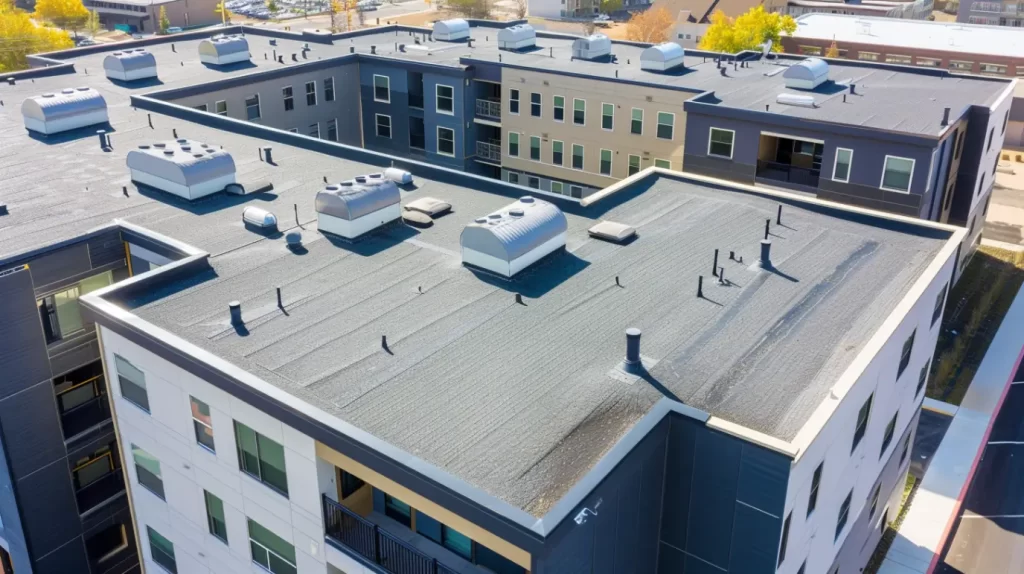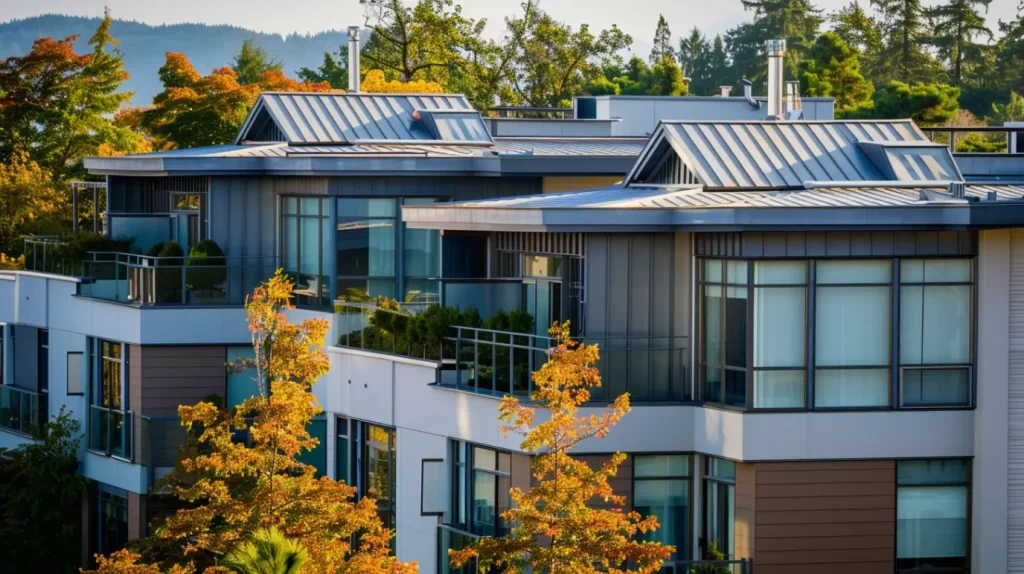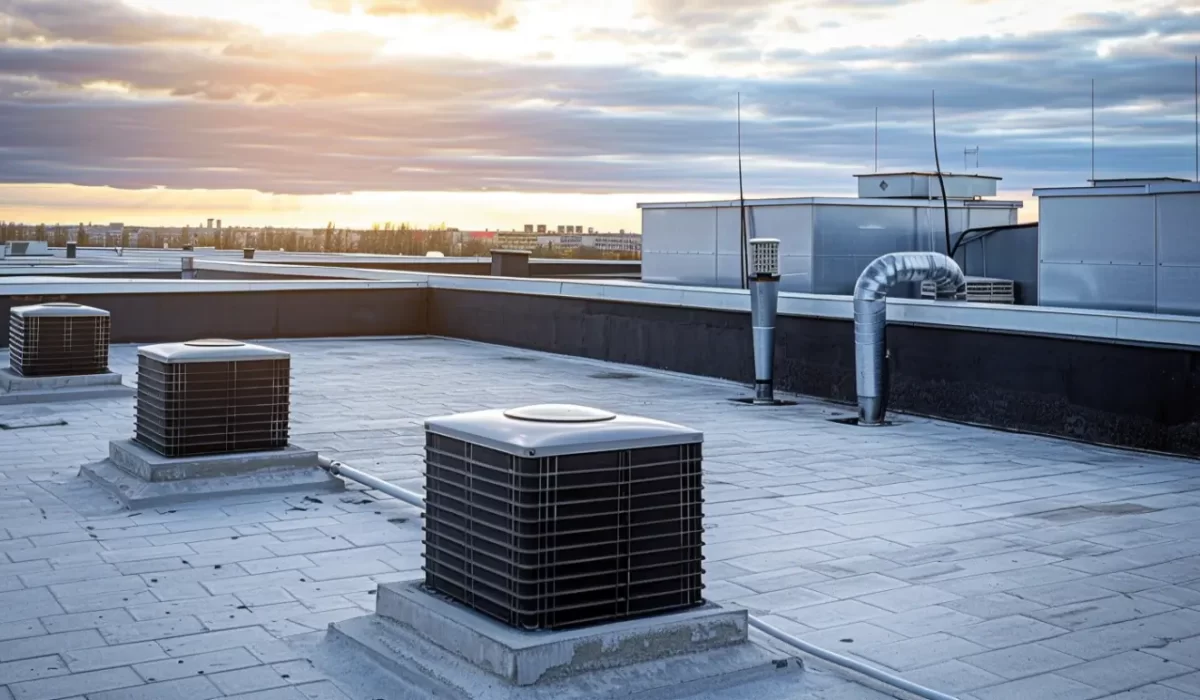Roof ventilation is a cornerstone of occupant health and comfort in residential buildings, particularly in Orange County’s multi-unit properties. If you’re a property manager or HOA in Orange County, CA, understanding the value of proper ventilation is essential. A well-designed system supports indoor air quality by allowing fresh air to circulate, preventing the buildup of pollutants, and keeping humidity in check. At Fontaine Roofing in Orange County, CA, we recognize how critical ventilation is to the safety, efficiency, and overall satisfaction of tenants in every building we serve.
Why Roof Ventilation Matters in Multi-Unit Residential Buildings
Every multi-unit residential building faces unique roof ventilation challenges. In Orange County, CA, fluctuating heat and humidity can cause stale air, excess moisture, and uneven temperatures. As a GAF Master Elite Contractor, we install and maintain effective roof ventilation systems. Our certifications as a CertainTeed Shingle Master and Polyglass Preferred Contractor highlight our roofing expertise. Additionally, as an IB Roofing Systems Authorized Applicator and TRI-certified provider, we deliver specialized services to prevent long-term damage. As members of CACM, CAI, and NRCA, we are committed to creating comfortable, healthy living spaces that meet industry standards.
Contact Us
Impact on Indoor Air Quality and Overall Comfort
Effective airflow is vital for optimal indoor air quality in multi-unit residential buildings. A well-designed roof ventilation system exchanges humid air for fresh air, reducing mold and mildew risks. Balanced ventilation maintains comfortable temperatures in living spaces.
Poor airflow can cause heat buildup, leading to higher energy bills from overworked HVAC systems and discomfort for residents. Regular heating and air circulation upgrades improve energy efficiency and extend the roofing system’s lifespan.
Health Risks Linked to Poor Roof Ventilation
Inadequate roof ventilation poses significant health risks, especially in multi-unit residential buildings. Humid air accumulation fosters mold and mildew growth, triggering respiratory issues and allergies among residents. Poor airflow compromises indoor air quality and increases the spread of airborne contaminants.
Additionally, heat buildup in poorly ventilated spaces raises temperatures, leading to discomfort, stress, and potential heat-related illnesses. Elevated indoor temperatures can cause fatigue and decreased cognitive function. Thus, ensuring adequate ventilation is essential for occupant comfort and health, creating a safer living environment.

Roof Ventilation vs. Insulation—What’s the Difference for Comfort?
Understanding the distinction between roof ventilation and insulation in the attic is key to achieving comfort in any multi-unit building. While both are crucial, they address different needs: insulation slows heat transfer, keeping interiors temperate, while roof ventilation manages airflow and moisture levels.
Combining these systems provides comprehensive protection. Insulation alone cannot control humidity or prevent mold growth—only airflow management ensures atmosphere is exchanged efficiently. Together, they deliver a balanced environment that enhances tenant comfort and extends the lifespan of your property. Next, we’ll examine how each influences temperature regulation.
How Each System Influences Temperature Regulation
Temperature regulation in multi-unit residential buildings depends on the interplay between roof ventilation and insulation. Together, they replace humid air with fresh air through natural or mechanical means, preventing heat buildup and ensuring comfort, particularly in summer.
Inadequate airflow can trap hot air indoors, increasing energy bills and degrading air quality while promoting mold growth. Upgrading air circulation alongside insulation improves energy efficiency and fosters a healthier living environment. Effective air exchange systems also extend the lifespan of roofing, enhancing overall well-being.
The Importance of Combining Insulation and Ventilation in Multi-Unit Complexes
Balancing insulation and airflow is essential for thermal comfort in multi-unit complexes. Proper insulation retains heat, while adequate air circulation expels humid air and heat buildup. This partnership creates a harmonious living environment, preventing mold and mildew growth.
Integrating these systems enhances indoor air quality and energy efficiency. A well-designed ventilation system circulates fresh air, reducing risks associated with stale air that can cause respiratory issues.

Effective Types of Roof Ventilation Systems
Selecting the right ventilation system is critical for apartments and condos in Orange County, CA. Mechanical ventilation, such as exhaust fans and heat recovery ventilators, can precisely control airflow and address building-wide needs. Passive options, like ridge and soffit vents, use natural airflow to maintain good indoor air quality without ongoing energy costs.
Each option has its own benefits and limitations, and the choice depends on factors like building size, age, and existing infrastructure. Let’s compare passive versus active solutions, and explore which systems work best for modern multi-unit buildings.
Pros and Cons of Passive vs. Active Ventilation Solutions
Evaluating passive and active airflow solutions reveals their unique advantages and drawbacks for enhancing indoor air quality in multi-unit residential buildings.
Passive systems utilize natural air circulation, requiring less energy and offering low operational costs, though their effectiveness can be weather-dependent.
Active air movement employs mechanical methods to regulate airflow, improving humidity and temperature control. While this boosts thermal comfort and reduces mold risks, it may result in higher energy bills. Each option has distinct installation, maintenance, and effectiveness considerations, prompting property managers to assess their specific needs to select the best approach for their buildings.
Ready to Get Started?
Roof ventilation in multi-unit residential buildings is essential for optimal indoor air quality and comfort. A well-designed mechanical systems reduce heat, moisture, and pollutants, preventing mold growth and extending roof lifespan. Incorporating natural and mechanical ventilation enhances energy efficiency and airflow balance. Property managers should prioritize regular maintenance and upgrades, as these systems significantly affect occupant well-being and operational costs. For expert assistance, contact Fontaine Roofing in Orange County, CA.
Read our blog: Working Through Insurance After a Roofing Claim
Frequently Asked Questions
What does comfort ventilation do?
Comfort ventilation ensures living spaces maintain optimal thermal comfort by balancing airflow and bringing in fresh air. These systems help regulate temperature and humidity, creating healthier and more pleasant environments—particularly important in shared apartments or condos where consistent comfort is essential.
Does roof ventilation really work?
Yes, roof ventilation is highly effective. It promotes energy efficiency by improving airflow, allowing hot air and moisture to escape. This reduces the risk of mold and keeps the structure dry, lowering energy costs and contributing to a healthier indoor environment for all building occupants.

